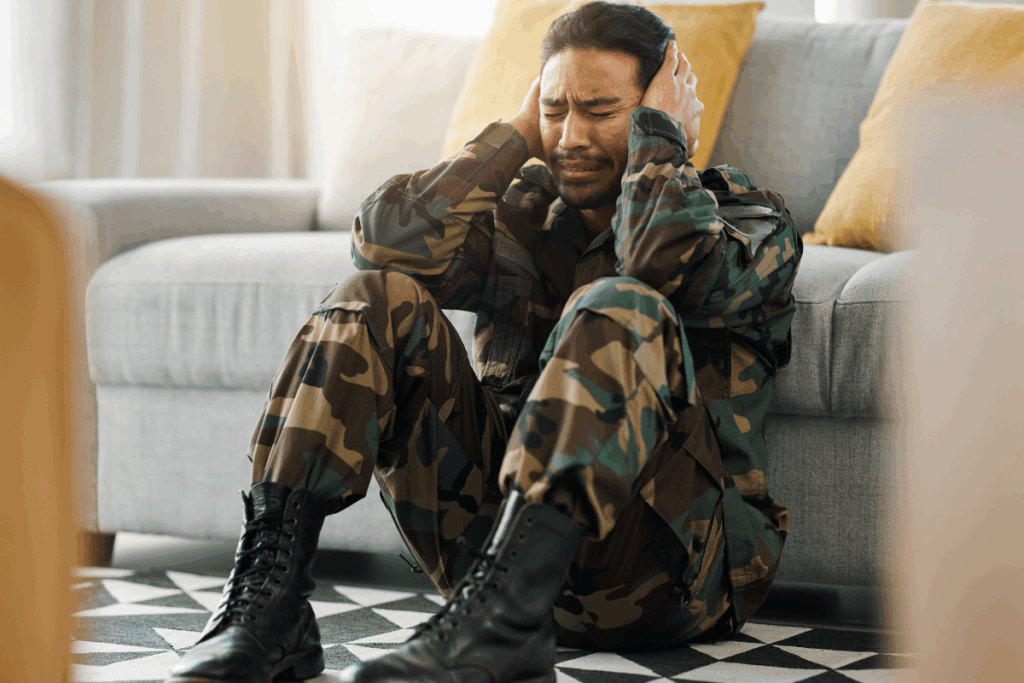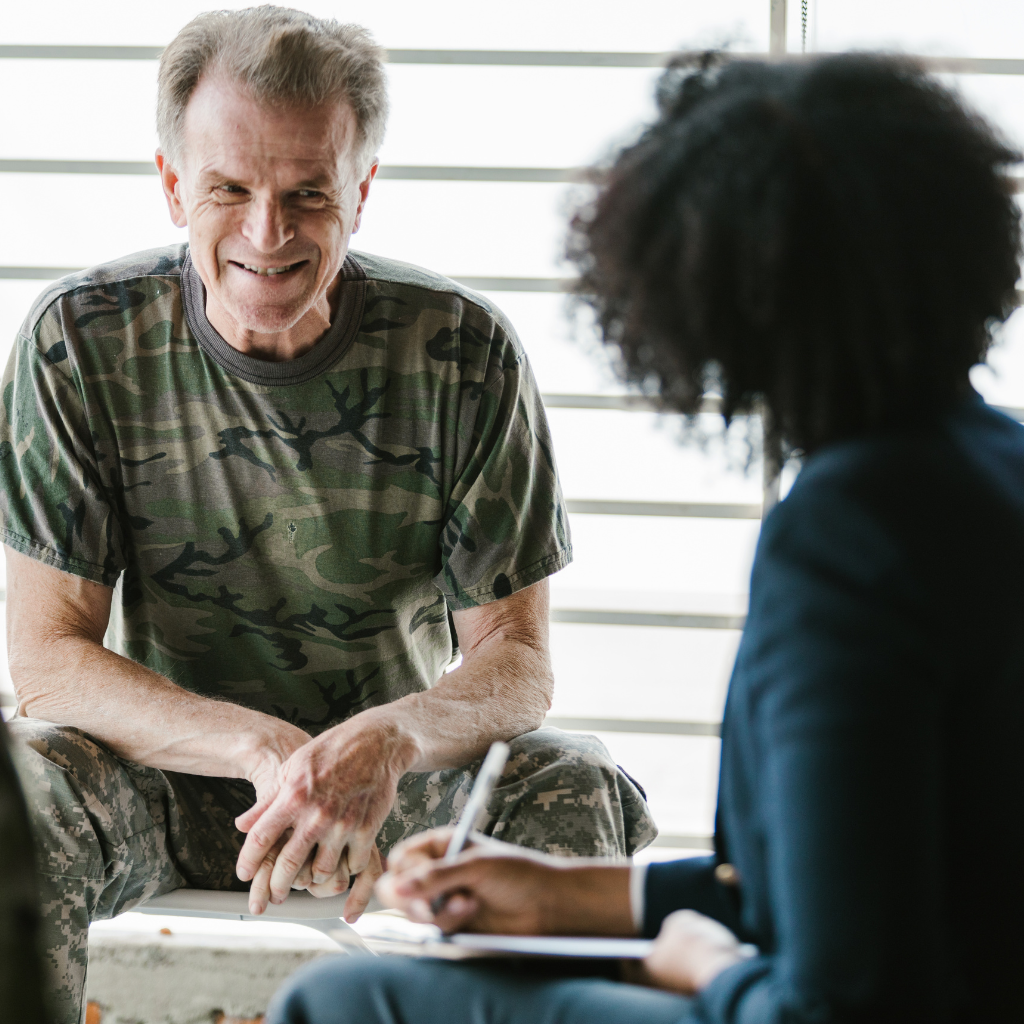
For many veterans, life after service can bring challenges due to lingering stress, unsettling memories, or difficulty adjusting to a new routine. For some, these experiences develop into Post-Traumatic Stress Disorder (PTSD)—a condition that can deeply affect mental health and daily living. PTSD in veterans is significantly more common than civilians as they have experienced so many traumatic events during their service time. While effective treatments exist, not every veteran feels ready to begin therapy right away. That’s where Motivational Interviewing (MI) can make a difference, offering a supportive way to build readiness and confidence for healing.
What is PTSD in Veterans and What Causes It?
PTSD is a mental health condition that develops after experiencing or witnessing life-threatening or traumatic events. In veterans, the trauma often comes from combat exposure, witnessing injury or death, or surviving high-stress deployments.
Not everyone exposed to trauma develops PTSD. Why some veterans do while others don’t is influenced by several factors:
- Intensity of trauma: Combat situations with prolonged exposure to threat increase risk.
- Pre-existing factors: history of mental health conditions, childhood trauma, or limited social support.
- Biological responses: differences in how the brain and stress hormones process trauma.
In essence, PTSD is not a sign of weakness—it’s the brain and body responding to overwhelming experiences.

What are the Symptoms of PTSD in Veterans?
PTSD doesn’t look the same for everyone. Symptoms can be grouped into four main categories:
- Re-experiencing: flashbacks, distressing memories, and nightmares that make it feel like the trauma is happening all over again.
- Avoidance: steering clear of reminders, people, or conversations linked to the traumatic experience.
- Negative thoughts and mood changes: feelings of guilt, shame, detachment, or loss of interest in activities once enjoyed.
- Hyperarousal: irritability, insomnia, being easily startled, or constantly “on guard.”
For veterans, these symptoms can strain relationships, affect work performance, and make it difficult to adjust to civilian life.
How Motivational Interviewing Can Help?
Even when evidence-based treatments like Cognitive Processing Therapy (CPT) or Prolonged Exposure (PE) are available, many veterans hesitate to start or stick with therapy. Stigma, doubts about treatment effectiveness, and fear of confronting painful memories can all get in the way.
Motivational Interviewing (MI) is a therapeutic approach designed to help people move through ambivalence and toward change. Instead of pressuring someone into treatment, MI emphasizes collaboration, empathy, and autonomy.
For veterans with PTSD, Motivational Interviewing can:
- Provide a safe space to voice fears about treatment.
- Help identify personal values and goals (e.g., wanting to reconnect with family, return to school, or sleep peacefully).
- Strengthen motivation by linking treatment to those deeply held values.
- Reduce dropout rates by building trust and empowering veterans to take steps at their own pace.
MI can significantly improve engagement in PTSD treatment, making veterans more likely to attend sessions and follow through with therapy.
What are the 5 Motivational Interviewing Techniques?

MI isn’t just casual conversation—it’s a structured method that uses specific techniques. The five core strategies are often remembered as OARS + E:
- Open-Ended Questions
Encourage reflection rather than yes/no answers. For example: “What changes do you hope therapy might bring to your daily life?” - Affirmations
Highlight strengths and resilience. Many veterans don’t recognize their own coping skills. Affirming them can build hope: “You’ve already shown incredible persistence by reaching out for help.” - Reflective Listening
Instead of jumping to fix problems, the therapist mirrors back what the veteran is saying, showing understanding and validation. - Summarizing
Pulling together what’s been discussed helps veterans feel heard and see their own progress: “So far, you’ve shared that sleep has been your biggest struggle, but reconnecting with your kids is also very important to you.” - Eliciting Change Talk
Gently guiding veterans to voice their own reasons for change, rather than being told what to do. This strengthens internal motivation: “How might life feel different if those nightmares were less frequent?”
These techniques give veterans a sense of control—a crucial factor when PTSD has left them feeling powerless. According to the VA, combining motivational strategies for better engagement with trauma-focused therapies leads to higher completion rates and better overall outcomes.
Final Thoughts
For veterans living with PTSD, starting treatment can feel like another battle—one fought against memories, fears, and doubts. Motivational Interviewing meets veterans where they are, respects their experiences, and helps them find their own reasons to heal.
PTSD may change the way life feels, but it doesn’t define the path forward. With the right support, therapy, and motivational guidance, veterans can reclaim a sense of peace, connection, and purpose beyond their service.
Responsibly edited by AI
Other Blog Posts in
Animo Sano Psychiatry is open for patients in North Carolina, Georgia and Tennessee. If you’d like to schedule an appointment, please contact us.
Get Access to Behavioral Health Care
Let’s take your first step towards. Press the button to get started. We’ll be back to you as soon as possible.ecovery, together.




